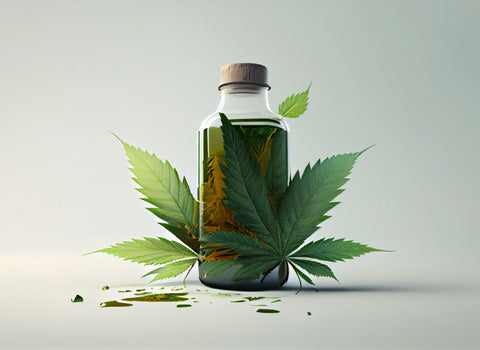
Low doses of THC and CBD are effective in fighting pancreatic cancer and improving the quality of life for many cancer patients going through chemo.
A 2019 meta-study indicates that CBD and THC combat pancreatic cancer by directly inhibiting tumor growth, inducing cancer cell death, and enhancing the effects of chemotherapy. These cannabinoids also “inhibit tumor vascularization by altering the morphology of blood vessels and reducing blood vessel proangiogenic factors…”
Whether you're battling an illness or simply looking for a natural way to fight stress and anxiety, relieve pain, or support your overall health, our low-dose THC edibles might be just the thing you need.
Find out how microdosing cannabis has more health benefits than higher doses.
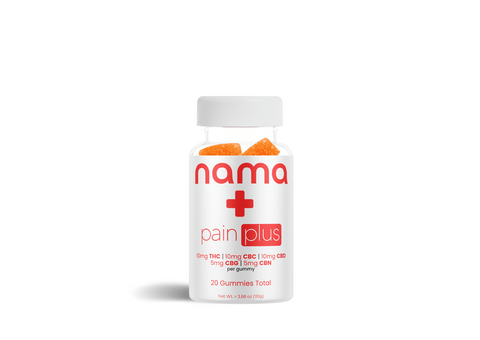
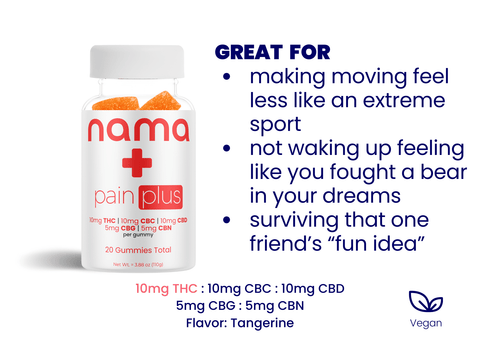
THC: 10 mg | CBC: 10 mg | CBD: 10 mg | CBG: 5 mg | CBN 5mg
Understanding pancreatic cancer
Pancreatic cancer develops in the tissues of the pancreas. The pancreas plays a crucial role in both digestion and blood sugar regulation. It produces digestive enzymes that help break down food and hormones such as insulin, which regulates blood sugar levels.
Pancreatic cancer is dangerous because it is often not detected until it is in an advanced stage. Because the pancreas is located deep within the body, early tumors are difficult to detect during routine physical exams. Also, early symptoms are often vague and easily attributed to other conditions.
What are the symptoms of pancreatic cancer?
Common symptoms of pancreatic cancer include the following:
- Jaundice: yellowing of the skin and eyes, often accompanied by dark urine and pale stools.
- Abdominal pain: persistent pain or discomfort in the upper abdomen that may radiate to the back.
- Weight loss: unexplained weight loss without changes in diet or exercise.
- Loss of appetite: a noticeable decrease in appetite or feeling full quickly after eating small amounts.
- Nausea and vomiting: frequent feelings of nausea and episodes of vomiting.
- Changes in stool: greasy or pale stools that float, indicating issues with fat digestion.
- Diabetes onset: sudden development of diabetes or worsening of pre-existing diabetes.
- Fatigue: persistent and unexplained tiredness or weakness.
- Blood clots: development of blood clots, which may cause swelling, pain, or redness in the legs.
- Digestive issues: problems such as indigestion, bloating, or gas.
If you notice any of these symptoms, contact your healthcare provider immediately.
What are the types of pancreatic cancer?
There are two main types of pancreatic cancer based on the type of cells involved:
- Exocrine pancreatic cancer is the most common type and usually begins in the pancreatic ductal cells where digestive enzymes are made. The most frequent form of exocrine pancreatic cancer is called pancreatic adenocarcinoma.
- Pancreatic neuroendocrine tumors (NETs) are less common and start in the hormone-producing cells of the pancreas.
What are the causes of pancreatic cancer?
The exact cause of pancreatic cancer is unknown, but several risk factors can increase the likelihood of developing this disease. The risk factors for pancreatic cancer include:
- Smoking. Tobacco use significantly increases the risk of pancreatic cancer. Smokers are twice as likely to develop the disease than non-smokers.
- Chronic pancreatitis. Long-term inflammation of the pancreas, often linked to heavy alcohol use or genetic disorders, can elevate the risk.
- Diabetes. Both long-standing and newly diagnosed diabetes are associated with a higher risk of pancreatic cancer.
- Family history. A family history of pancreatic cancer increases susceptibility.
- Obesity. Excess body weight is linked to a higher risk of pancreatic cancer.
- Age. The risk of pancreatic cancer increases with age, with most cases occurring in men and women over 60 years old.
- Diet. A diet high in red and processed meats and low in fruits and vegetables may contribute to a higher risk.
- Chemical exposure. Exposure to certain chemicals, such as pesticides, dyes, and chemicals used in metal refining, increases the risk.
- Genetic mutations. Inherited genetic mutations, such as those associated with Lynch syndrome or familial atypical multiple mole melanoma (FAMMM) syndrome, can increase the likelihood of developing pancreatic cancer.
- Chronic liver disease. Conditions such as cirrhosis are sometimes associated with an increased risk of pancreatic cancer.
How is pancreatic cancer treated?
Treatment of pancreatic cancer depends on the stage, the location of the tumor, and the overall health of the patient. The main treatment options include:
- Surgery removes the tumor and some surrounding tissue. This is only possible if the cancer is caught very early and located in the pancreas.
- Chemotherapy uses anti-cancer drugs to kill cancer cells. It is typically the main treatment for pancreatic cancer, sometimes combined with radiation therapy.
- Radiation therapy uses high-energy radiation to kill cancer cells. It can be given alone or with chemotherapy, before or after surgery.
- Targeted therapy targets specific mutations or cancer cell mechanisms with novel drugs.
- Immunotherapy helps the body's immune system better detect and attack cancer cells.
Many people with cancer have started microdosing cannabis as a complementary therapy to traditional cancer treatments and to alleviate chemotherapy-related side effects. While not a standalone treatment, small amounts of cannabis provide multi-level comfort and support throughout your battle with cancer.
Our favorite way to microdose cannabis is with our low-dose THC gummies and cannabis-infused beverages.
What are the anticancer properties of cannabis?
Emerging research reveals the potent antitumor effects of cannabinoids. A 2022 systematic review and meta-analysis by Hinz and Ramer highlighted the therapeutic potential of tetrahydrocannabinol (THC) and cannabidiol (CBD) for many cancer types.
According to the study, THC, CBD, and many other cannabis compounds can:
- Inhibit the rapid multiplication and division of cancer cells (proliferation). THC and CBD impede cancer cell proliferation by interfering with growth signals and activating cell cycle inhibitors like p21 and p27.
- Stop cancer cells from penetrating surrounding tissues and spreading (invasion). Certain cannabis compounds reduce cancer cell invasion by upregulating TIMP-1, an inhibitor of proteins involved in invasion, and downregulating Id-1, a key regulator of invasiveness.
- Block metastasis (the process by which cancer cells break away from the primary tumor, travel through the bloodstream or lymphatic system, and form new tumors in other body parts).
- Block the formation of new blood vessels (angiogenesis) that allow tumors to receive nutrients and thrive. Cannabis inhibits tumor angiogenesis by downregulating pro-angiogenic factors such as VEGF, PlGF, and Ang-2, starving tumors of required new blood vessel formation.
- Induce programmed cell death (apoptosis) in cancer cells. Apoptosis is a natural process by which unhealthy and damaged cells self-destruct. Cannabis induces apoptosis in cancer cells through mechanisms involving ceramide buildup, endoplasmic reticulum stress, and reactive oxygen species generation.
- Induce self-digestion of cancer cells (autophagy) where they break down and recycle damaged components, leading to cancer cell death. THC and CBD trigger autophagy in cancer cells by suppressing the Akt/mTOR survival pathway and activating AMPK, which promotes autophagy under stress.
- Stimulate anti-tumor immune responses. THC and CBD enhance killer cell activity against cancer cells.
Cannabis compounds activate and interact with the cannabinoid receptors in the endocannabinoid system (ECS) to produce its effects and fight cancer. THC and CBD are phytocannabinoids (cannabinoids derived from plants) that interact with our bodies’ ECS in the same way the natural cannabinoids do. They bind to endocannabinoid receptors (mainly CB1 and CB2, but also many others) to modulate pain signals, sleep, appetite, the immune response, and many other biochemical changes in the body.
Guindon and Hochmann also suggest that the antitumor effects of cannabinoids on CB1 and CB2 receptors inhibit tumor growth, migration, and proliferation while inducing apoptosis in breast, prostate, and bone cancers.
This is great news for patients with many types of cancer such as breast cancer and prostate cancer. Let’s see how our microdosed formula fares against pancreatic cancer.
Is cannabis effective against pancreatic cancer?
Emerging research shows that cannabis effectively fights pancreatic cancer. Compounds such as THC and CBD, along with many other minor cannabinoids, target and disrupt critical cancer cell processes.
Sharafi, et. al. found that:
- THC and CBD induce programmed cell death (apoptosis) in pancreatic cancer cells. They achieve apoptosis through ceramide buildup, endoplasmic reticulum stress, and generation of reactive oxygen species—they increase harmful lipids, strain cancer protein factories, and generate damaging oxygen molecules, all of which lead to cancer cell death.
- Cannabis compounds trigger autophagy in pancreatic cancer cells by suppressing the Akt/mTOR survival pathway and activating AMPK. These mechanisms disrupt critical signals that cancer cells need to grow and survive, inducing a self-digestion process that aids cancer cell apoptosis.
- Cannabis induces the proliferation and invasion of pancreatic cancer cells. It interferes with growth signals, activates cell cycle inhibitors, and downregulates proteins involved in invasion. This hampers the cancer cell's ability to multiply and spread.
- THC and CBD reduce tumor angiogenesis by downregulating pro-angiogenic factors such as VEGF. This starves tumors of new blood vessel formation required for growth.
- Modulating anti-tumor immune responses and inflammation through interaction with cannabinoid receptors like CB1 and CB2 expressed on pancreatic cancer cells.
A group of Thai researchers proposed that cannabis also inhibits migration and invasion of pancreatic stellate cells (PSCs). These are cells in the tumor microenvironment that help the cancer cells multiply, spread to other parts, resist chemotherapy treatment, and evade the immune system's attack. Cannabinoids reduced PSC migration to other parts of the body and production of extracellular matrix proteins and inflammatory cytokines.
The Thai study also found that a 1:1 THC to CBD ratio was most potent in inhibiting the proliferation of different cancer cell lines, including the pancreatic cancer Capan-2 cells.
Product QUIZ
Need help deciding what product is best for you? Take our quiz, just three questions until your perfect match!
The role of the endocannabinoid system against cancer
The endocannabinoid system is a complex network of chemical signals and receptors that “serves pivotal roles in a diverse range of physiological and pathophysiological states, including behavior, pain, schizophrenia, obesity, Alzheimer's disease, multiple sclerosis and cardiovascular disease.” (Lerner, et. al.)
Its main role is to maintain homeostasis by regulating important bodily functions such as sleep, mood, pain perception, and immunological response. While our bodies naturally produce endocannabinoids, phytocannabinoids found in the cannabis plant interact with our ECS in the same way. They bind to the endocannabinoid receptors and influence many important biochemical changes in the body. They target the ECS and slow tumor growth.
Delta 9 has a similar structure to these endocannabinoids and binds strongly to cannabinoid receptors, specifically CB1 and CB2 receptors. This binding triggers cellular responses that produce diverse effects in the body.
While higher doses may cause psychoactive effects, low amounts of THC produce a wide range of therapeutic benefits. That’s why we stick to small, controlled amounts in our gummies and drinks. The low-dose cannabis edibles help inhibit tumor cell proliferation, reduce tumor invasion and metastasis, and induce apoptosis in tumor cells through intricate interactions with the ECS.
A 2022 study suggests that cannabinoids could be promising anti-cancer agents for pancreatic ductal adenocarcinoma (PDAC) because cannabinoid receptors are overexpressed in pancreatic cancer cells. The study even shows that a combination of cannabinoids and chemotherapy may increase the survival of cancer animal models.
Another study suggests that CBD and THC prevent pancreatic cancer cell proliferation by targeting a protein called PAK1, which is often active in these cancers. By reducing PAK1, CBD and THC also lower the levels of PD-L1, a protein that helps cancer cells escape the immune system, making it easier for the body to attack the tumors.
Combinations of THC and CBD show enhanced anti-cancer action over each cannabinoid alone, with potential tumor cell selectivity over non-transformed counterparts. This points to the entourage effect.
The entourage effect is the cannabinoid synergy that has shown therapeutic benefits in treating cancer without causing psychoactive effects. Cannabinoids taken together enhance each other’s effects and bring more therapeutic benefits than each one in isolation.
With higher concentrations of THC and CBD (10 mg per edible), nothing says relief from nasty side effects of cancer therapy quite like our Euphoria gummies. If you’re looking for a more balanced cannabis product, take a look at our collection of full-spectrum gummies to lift your spirit without intoxication.
Check out more reasons why our entourage effect edibles are the ultimate cannabis companion.
How does cannabis alleviate therapy-related side effects?
Chemotherapy and other cancer treatments can have a substantial negative impact on the lives of patients with pancreatic cancer. Low doses of THC seem to act synergistically with cytotoxic chemicals and boost their efficiency against cancer.
Here’s how our low-dose edibles with THC, CBD, and other cannabis compounds offer pancreatic cancer patients relief:
- Cannabis edibles help alleviate pain. Chemotherapy often comes with significant chronic pain that stems from painful nerve damage or neuropathy. A 2015 study found that cannabis might be an effective treatment to relieve neuropathic pain, arthritis pain, and cancer pain. THC and CBD have anti-inflammatory properties that can relieve pain at its source.
- THC stimulates appetite and reduces weight loss in patients. According to research, THC and CBD “have indications as appetite stimulants, antiemetics…and are approved by the FDA for HIV/AIDS-induced weight loss of appetite and chemotherapy-induced nausea and vomiting.”
- The cytotoxic chemotherapy drugs that kill cancer cells also damage healthy, fast-dividing cells in the body, like those in the gut, triggering severe nausea. Low-dose cannabis reduces nausea and vomiting. A 2020 clinical trial found that “the addition of oral THC:CBD to standard antiemetics was associated with less nausea and vomiting.”
- Chemotherapy can be harsh on patients and have a multitude of adverse effects, so patients often look for ways to deal with and relieve pain day-to-day. CBD is known for its relaxing and anti-anxiety effects.
Many of our products contain low amounts of Delta 9. Only 2.5 milligrams of THC and CBD in our Buzz Drops™ give you a mild euphoric experience, pleasant pain relief, and release from stress and anxiety. Add a dropper-full or two to your favorite non-alcoholic beverage and experience a gentle, soothing uplift to your day.
It’s so easy to make THC drinks. You can read all about crafting delicious buzztails™ right here.
Is microdosing cannabis legal?
Delta 9 THC is legal on a federal level in the US if products comply with the following conditions stipulated by the 2018 Farm Bill:
- The THC content cannot exceed 0.3% of THC by dry weight
- The Delta 9 must be derived from the hemp plant, not marijuana
The 2018 Farm Bill made THC and CBD products derived from hemp with less than 0.3% THC federally legal. CBD products containing more than 0.3% THC are still federally illegal—but legal under some state laws.
Read up on the state-by-state legality of Delta 9 to make sure you know the legal status of your favorite Delta 9 gummies in your state.
Pancreatic cancer FAQ
Pancreatic cancer can be shrunk through a combination of treatments such as surgery, chemotherapy, radiation therapy, and targeted therapy. Clinical studies have shown that medicinal cannabis products and cannabis oil have antitumor effects on pancreatic cancer cell lines. These cannabinoids work by inhibiting cell growth and inducing apoptosis (programmed cell death) in cancer cells.
Some preclinical studies suggest that targeting p21-activated kinase 1 (PAK1) and reducing the expression of PD-L1 can enhance the body’s immune response against tumors.
It is extremely challenging to beat stage 4 pancreatic cancer. Treatments often involve a combination of chemotherapy, targeted therapy, and sometimes radiation therapy. Cannabis products have shown promise for their potential antitumor effects. Observational studies suggest that cannabinoids might enhance the effects of chemotherapy, providing better outcomes.
Chemotherapy can be worth it for stage 4 pancreatic cancer because it may extend life and alleviate symptoms, even though it is not curative. A systematic review and meta-analysis have shown that chemotherapy improves survival and quality of life in some patients with pancreatic cancer. Chemotherapy targets pancreatic cancer cell lines, slowing disease progression and reducing tumor size.
Pancreatic cancer can be slowed down using a combination of treatments including chemotherapy, targeted therapy, and the use of cannabinoids. Cannabis compounds downregulate proteins involved in cancer cell invasion and promote apoptosis. Many people with pancreatic cancer change their lifestyles, focusing on a healthy diet.
The progression from stage 1 to stage 4 pancreatic cancer varies among cancer patients and depends on the cancer's aggressiveness and the patient's overall health. Previous studies suggest that pancreatic cancer can progress rapidly, often within a year or two. The disease needs to be caught early so its progression can be slowed down.
Some studies have shown that coffee consumption may reduce the risk of pancreatic cancer and help combat and manage the disease. The beneficial effects are thought to be due to the antioxidant properties of coffee and its ability to improve insulin sensitivity, which may lower the risk of pancreatic cancer.
Coffee also contains anti-inflammatory compounds that protect cells from damage and reduce the likelihood of cancerous changes. Regular coffee consumption may also help in regulating cell growth and repair, further decreasing the risk of pancreatic cancer.
Pancreatic cancer cells primarily feed on glucose and certain amino acids, which are essential for their growth and survival. The Akt/mTOR pathway is often activated in pancreatic cancer, promoting cell growth and proliferation.
Pancreatic cancer cells also rely heavily on glutamine, which fuels their energy needs and helps build essential molecules for growth. Chronic inflammation in the tumor environment further supports cancer by providing the nutrients and growth factors these cells need to thrive.
Pancreatic cancer can be very painful. Chronic pain is a common symptom because the tumor presses on surrounding nerves and organs. Medical marijuana, such as using cannabis oil and cannabis extracts, has the potential to alleviate cancer-related pain. Clinical studies indicate that medical marijuana may treat neuropathic pain associated with cancer.
Top Sellers
New? Start with our Ultimate Sampler!

THC: 10 mg | CBC: 10 mg | CBD: 10 mg | CBG: 5 mg | CBN 5mg
Resources
Sharafi, G., He, H., & Nikfarjam, M. (2019). Potential Use of Cannabinoids for the Treatment of Pancreatic Cancer. Journal of Pancreatic Cancer, 5(1), 1-7. https://doi.org/10.1089/pancan.2018.0019
Hinz, B., & Ramer, R. (2022). Cannabinoids as anticancer drugs: Current status of preclinical research. British Journal of Cancer, 127(1), 1-13. https://doi.org/10.1038/s41416-022-01727-4
Guindon, J., & Hohmann, A. G. (2011). The endocannabinoid system and cancer: Therapeutic implication. British Journal of Pharmacology, 163(7), 1447-1463. https://doi.org/10.1111/j.1476-5381.2011.01327.x
Sharafi, G., He, H., & Nikfarjam, M. (2019). Potential Use of Cannabinoids for the Treatment of Pancreatic Cancer. Journal of Pancreatic Cancer, 5(1), 1-7. https://doi.org/10.1089/pancan.2018.0019
Sakarin, S., Meesiripan, N., Sangrajrang, S., Suwanpidokkul, N., Prayakprom, P., Bodhibukkana, C., Khaowroongrueng, V., Suriyachan, K., Thanasittichai, S., Srisubat, A., Surawongsin, P., & Rattanapinyopituk, K. (2022). Antitumor Effects of Cannabis Use in Human Pancreatic Ductal Adenocarcinoma Cell Line (Capan-2)-Derived Xenograft Mouse Model. Frontiers in Veterinary Science, 9, 867575. https://doi.org/10.3389/fvets.2022.867575
Lerner, R., Lutz, B., & Bindila, L. Tricks and Tracks in the Identification and Quantification of Endocannabinoids. https://doi.org/10.1002/9780470015902.a0023407
Falasca, V., & Falasca, M. (2022). Targeting the Endocannabinoidome in Pancreatic Cancer. Biomolecules, 12(2). https://doi.org/10.3390/biom12020320
Yang, Y., Huynh, N., Dumesny, C., Wang, K., He, H., & Nikfarjam, M. (2020). Cannabinoids Inhibited Pancreatic Cancer via P-21 Activated Kinase 1 Mediated Pathway. International Journal of Molecular Sciences, 21(21). https://doi.org/10.3390/ijms21218035
Hill KP. Medical Marijuana for Treatment of Chronic Pain and Other Medical and Psychiatric Problems: A Clinical Review. JAMA. 2015 Jun 23-30;313(24):2474-83. doi: 10.1001/jama.2015.6199. Erratum in: JAMA. 2016 Sep 6;316(9):995. PMID: 26103031.
Bilbao, A., & Spanagel, R. (2022). Medical cannabis: a pharmacology-based systematic review and meta-analysis for all relevant medical indications. BMC Medicine, 20(1). https://doi.org/10.1186/s12916-022-02459-1
Grimison, P., Mersiades, A., Kirby, A., Lintzeris, N., Morton, R., Haber, P., Olver, I., Walsh, A., McGregor, I., Cheung, Y., Tognela, A., Hahn, C., Briscoe, K., Aghmesheh, M., Fox, P., Abdi, E., Clarke, S., Della-Fiorentina, S., Shannon, J., . . . Stockler, M. (2020). Oral THC:CBD cannabis extract for refractory chemotherapy-induced nausea and vomiting: A randomised, placebo-controlled, phase II crossover trial. Annals of Oncology, 31(11), 1553-1560. https://doi.org/10.1016/j.annonc.2020.07.020
Yao D, Li C, Rajoka MSR, He Z, Huang J, Wang J, Zhang J. P21-Activated Kinase 1: Emerging biological functions and potential therapeutic targets in Cancer. Theranostics. 2020 Aug 1;10(21):9741-9766. doi: 10.7150/thno.46913. PMID: 32863957; PMCID: PMC7449905.
Wardill, H. R., Wooley, L. T., Bellas, O. M., Cao, K., Cross, C. B., Van Dyk, M., Kichenadasse, G., Bowen, J. M., Zannettino, A. C., Shakib, S., Crawford, G. B., Boublik, J., Davis, M. M., Smid, S. D., & Price, T. J. (2023). Supporting gut health with medicinal cannabis in people with advanced cancer: Potential benefits and challenges. British Journal of Cancer, 130(1), 19-30. https://doi.org/10.1038/s41416-023-02466-w
Nguyen, L. B., Vu, L. G., Le, T. T., Nguyen, X. T., Dao, N. G., Nguyen, D. C., Dang, T. H. T., Vu, T. M. T., Boyer, L., Fond, G., Auquier, P., Latkin, C. A., Zhang, M. W., Ho, R. C., & Ho, C. S. (2023). Impact of interventions on the quality of life of cancer patients: a systematic review and meta-analysis of longitudinal research. Health and Quality of Life Outcomes, 21(1). https://doi.org/10.1186/s12955-023-02189-9
Ran, Q., Wang, Z., & Sun, Q. (2016). Coffee Consumption and Pancreatic Cancer Risk: An Update Meta-analysis of Cohort Studies. Pakistan Journal of Medical Sciences, 32(1), 253-259. https://doi.org/10.12669/pjms.321.8761
Yu, J., Blackford, A. L., Wolfgang, C. L., & Goggins, M. (2015). Original article: Time to progression of pancreatic ductal adenocarcinoma from low-to-high tumour stages. Gut, 64(11), 1783-1789. https://doi.org/10.1136/gutjnl-2014-308653
Michalski, C. W., Oti, F. E., Erkan, M., Sauliunaite, D., Bergmann, F., Pacher, P., Batkai, S., Müller, M. W., Giese, N. A., Friess, H., & Kleeff, J. (2008). Cannabinoids in pancreatic cancer: Correlation with survival and pain. International Journal of Cancer. Journal International du Cancer, 122(4), 742. https://doi.org/10.1002/ijc.23114
nama CBD FDA & legal disclaimer
Our products are not intended to diagnose, treat, cure, or prevent any disease. They are not a replacement for prescription medications and have not been evaluated by the U.S. Food and Drug Administration (FDA).
The information provided on this website does not and is not intended to, constitute legal advice or any statement of the status of any laws. Any information, content, and materials available on this site are for general informational purposes only and are not intended to be relied upon for any purpose.
Readers of this website should contact their attorney to obtain advice concerning any particular legal matter, including decisions on what products are, or are not, legal to sell, possess, or consume. No reader, user, or browser of this site should act or refrain from acting based on the information on this site without first seeking legal advice from their counsel in the relevant jurisdiction.
About
Learn
Join us on this journey

© Copyright 2025 nama Products LLC. All Rights Reserved.
†These statements have not been evaluated by the Food and Drug Administration. These products are not intended to diagnose, treat, cure or prevent any disease. All information presented here is not meant as a substitute for or alternative to information from health care practitioners. Please consult your health care professional about potential interactions or other possible complications before using any product.
††The information provided on this website does not, and is not intended to, constitute legal advice or any statements of the status of any laws. Any information, content, and materials available on this site are for general entertainment purposes only, and are not intended to be relied upon for any purpose.

By clicking ‘Yes,’ you agree to our
Terms & Conditions and Privacy Policy
123 John Doe Street
Your Town, YT 12345
Store Hours
Sun: Closed
Mon-Fri: 9:00 - 17:00
Sat: 10:00 - 13:00
What to expect at pickup
Closed
Closing at 5pm
Closing at 5pm
Closing at 5pm
Closing at 5pm
Closing at 5pm
Closing at 1pm

![Buzz Packs™ [THC and CBD Powder Drink Mix]](http://www.namacbd.com/cdn/shop/files/nama_buzz_packs_thc_drink_pack_white_background.png?v=1741884660&width=480)
![Buzz Packs™ [THC and CBD Powder Drink Mix]](http://www.namacbd.com/cdn/shop/files/Buzz_Packs_Label.png?v=1741884660&width=480)
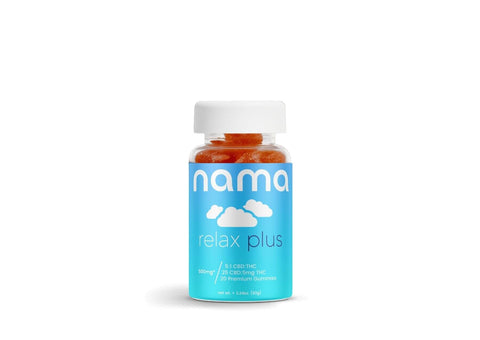
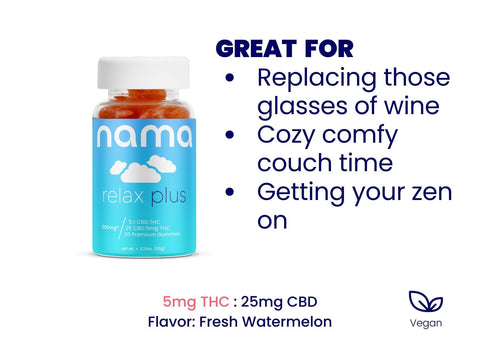
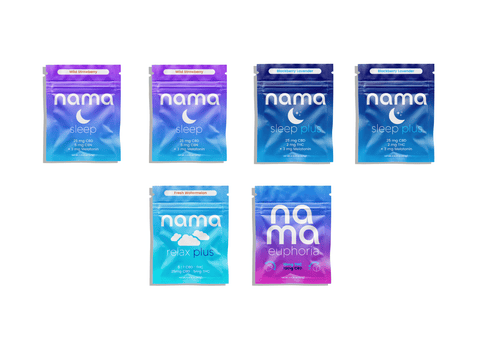
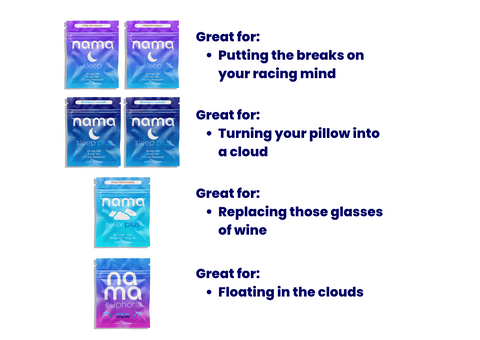
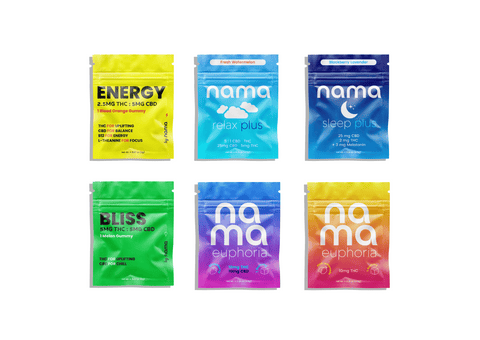
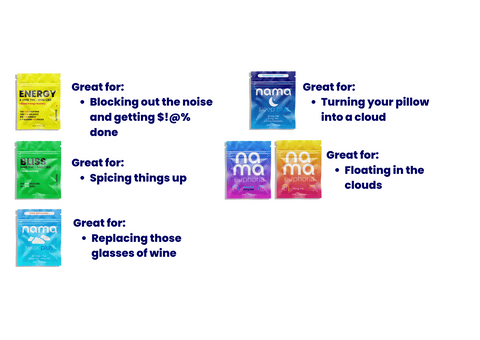
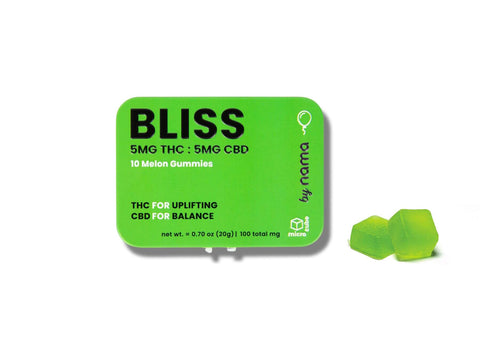
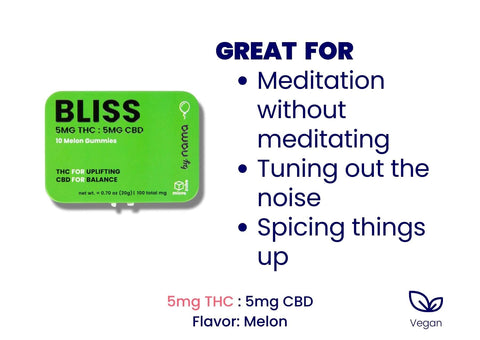
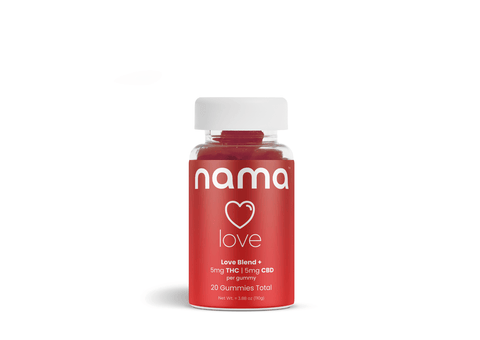
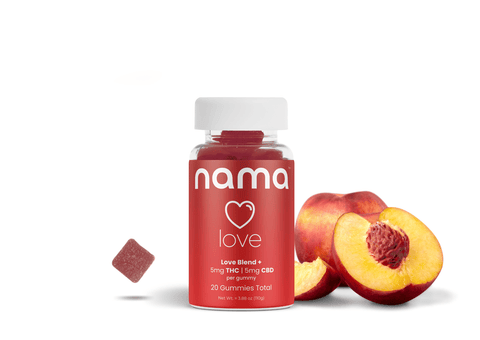
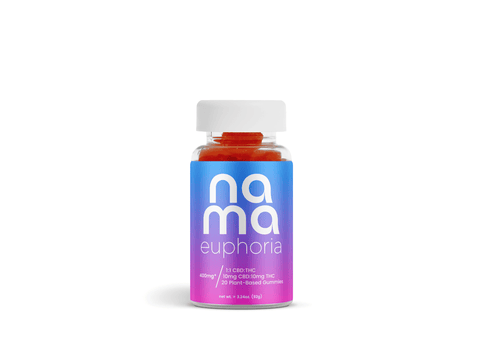
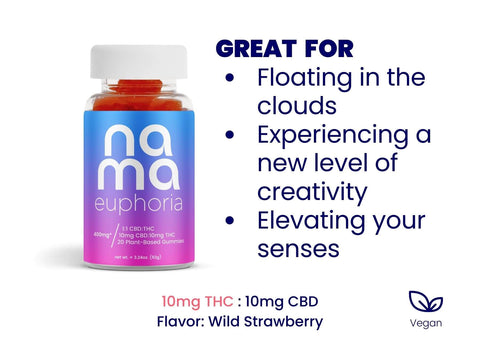
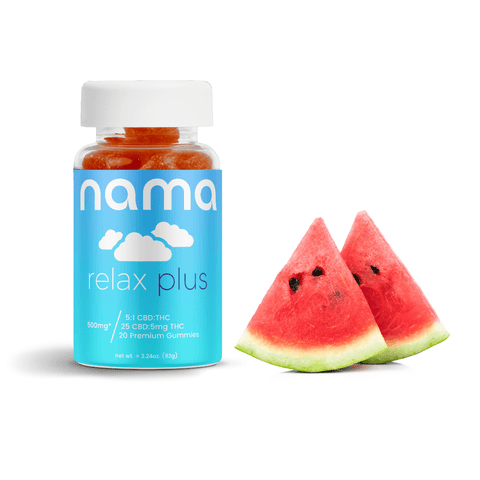
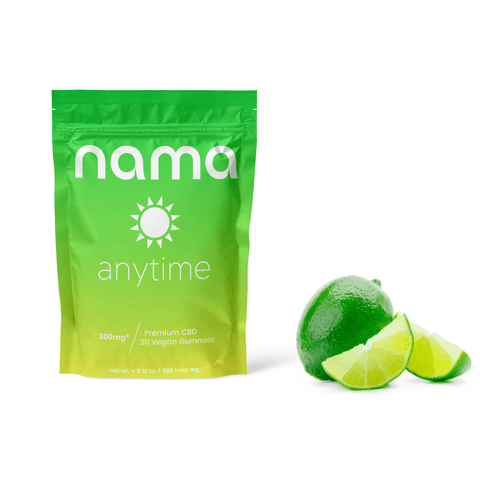
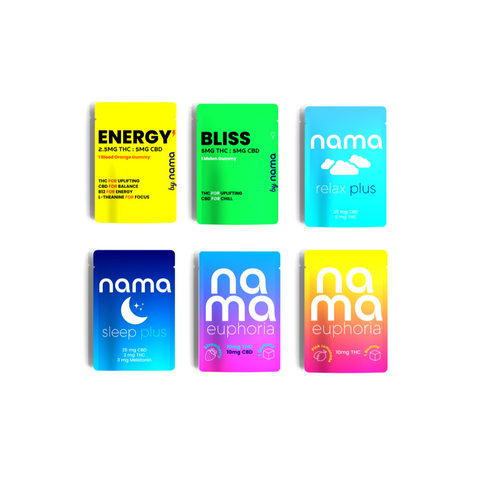
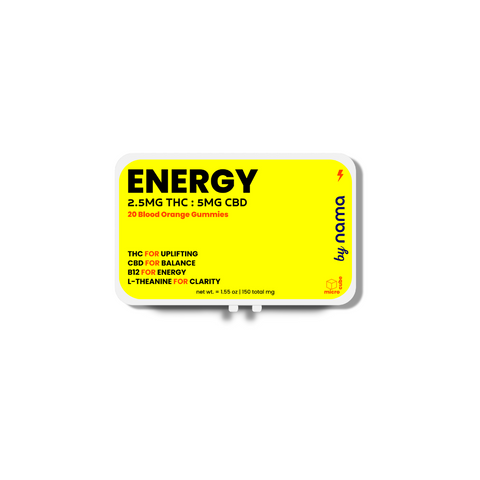
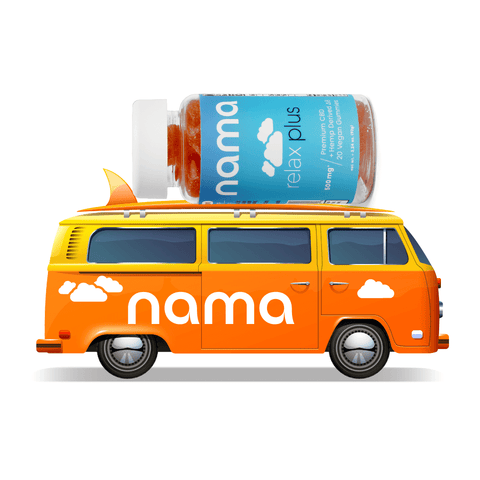
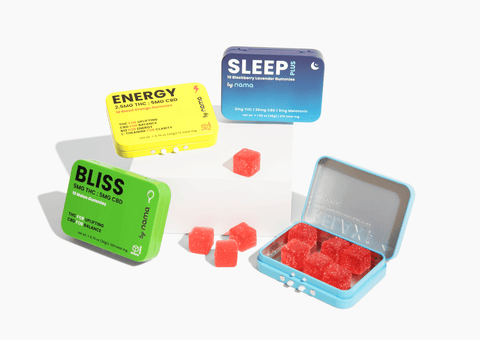
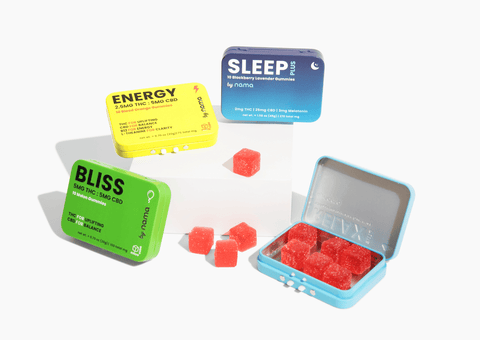
![Buzz Drops™ [THC Drink Drops]](http://www.namacbd.com/cdn/shop/files/nama_thc_buzz_drops.png?v=1711412866&width=480)
![Buzz Drops™ [THC Drink Drops]](http://www.namacbd.com/cdn/shop/files/buzz-drop-wine-comparison.png?v=1736882023&width=480)
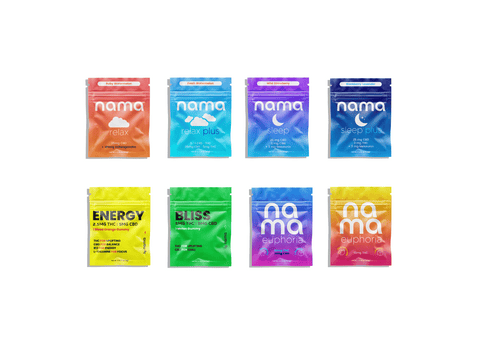
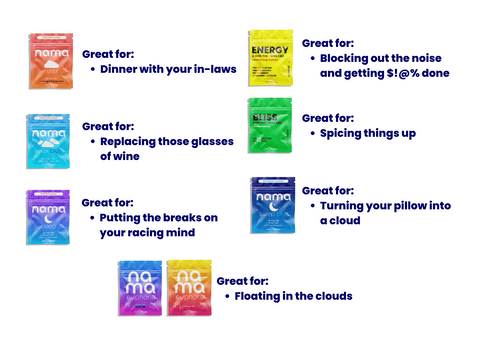
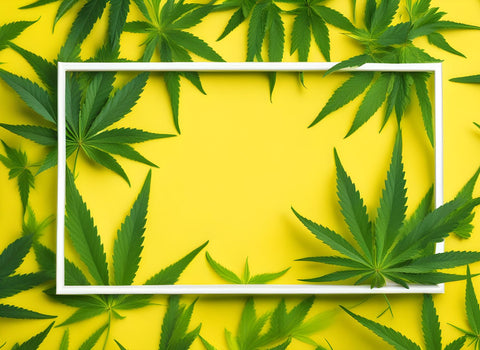
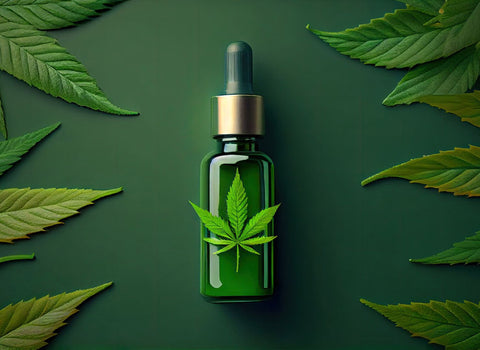

Comments (0)
There are no comments for this article. Be the first one to leave a message!